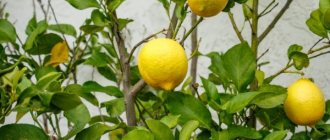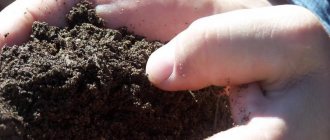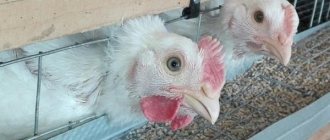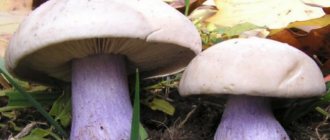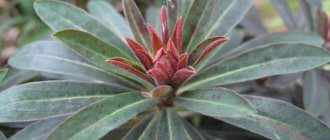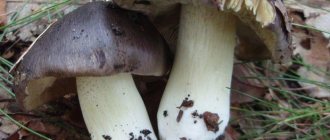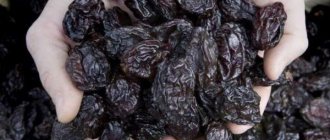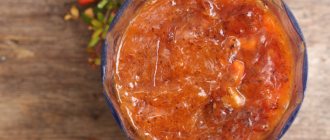Yeast as a fertilizer: composition
Many people think that yeast can only be used for making intoxicating drinks and various baked goods. But no one thinks that this type of fungus contains a huge amount of carbohydrates, proteins, iron and various microelements. Many summer residents use it as a fertilizer for their gardens.
Yeast secretes many useful substances that can actively stimulate plant growth: B vitamins, phytohormones and auxins. Yeast contains cytokinins, hormones that help regulate cell division and differentiation. The presence of these substances has a positive effect on plant growth and their development in general.
Useful tips
As fertilizers for indoor flowers, fertilizers made from dry or pressed yeast and starter cultures obtained by fermentation are used.
Tips from an experienced gardener:
- yeast fertilizers work well when applied to heated soil; if the room is cold, fertilizing will not work;
- an expired product will not give the desired effect;
- During the fermentation process, potassium and calcium, which are present in the soil, are consumed; ground eggshells or wood ash are added along with yeast fertilizer.
You can understand that it’s time to feed the flowers with useful substances by the following signs:
- slower growth, thinning of the stem;
- weak, small, yellowish leaves;
- cessation of flowering for a long time;
- dropping leaves;
- defeat by diseases.
Nutrients for a houseplant usually last about 60 days. Yeast fertilizers are applied no more than three times a season. By reducing the concentration of the composition, you can fertilize the soil a little more often.
Yeast as a fertilizer: the need for use
House flowers on the windowsill need more frequent feeding than plants in the garden. This is due to the small location. The substrate of flower pots, no matter how spacious they are, does not contain enough minerals. With a lack of lighting and lack of nutrients in the limited space of the pot, indoor plants begin to fade and weaken, losing their attractiveness. Therefore, fertilizing soil with yeast for indoor flowers is very important.
Yeast is most suitable for these purposes. With the help of this affordable component, you can restore the beauty of house plants and stimulate their flowering. After fertilizing the plant with hop fertilizer, the decorative appearance improves, the flowering period becomes longer, and the flower buds become larger. Scientists have studied the effect of yeast on soil. They found that the yeast solution makes microorganisms more active, transferring many useful substances to the soil.
You may be interested in: Fertilizer for cyclamen
During the processing of organic matter, important compounds such as phosphorus and nitrogen are formed, which significantly improve the composition of the soil. It must be remembered that during fermentation fungi absorb calcium and potassium from the soil in large quantities. In order to compensate for the lack of these substances, it is necessary to additionally feed the soil with ash.
When the active yeast concentrate is dissolved, the biological substances released into the water improve the substrate, increase the resistance of indoor plants to various types of pests and diseases, and stimulate the formation of roots. Experiments have shown that roots appear 10 days earlier after watering. The root system becomes more powerful. Fertilizing with yeast enriches the soil microflora and provides food for plant roots.
Yeast starter is an indispensable aid to the florist
Yeast starter has been considered an excellent stimulator for the development of domestic plants for many years. It saturates the soil with vitamins and phytohormones, including cytokinin, which is responsible for cell division. The fact is that, penetrating into the soil, the yeast fungus affects the composition of the soil, activating microorganisms, which in turn process organic matter and release potassium and nitrogen, which are so necessary for plants. Scientists believe that nutritional yeast as a fertilizer for plants is quite capable of replacing full-fledged mineral nutrition.
To prepare this universal fertilizer, dissolve 10 grams of yeast and one tablespoon of sugar in 1 liter of warm water. If dry yeast is used, the same amount is diluted in 10 liters of water using 3 tablespoons of granulated sugar. Then the solution should be allowed to brew for 3-5 hours. Before watering the plants, dilute the resulting mixture with clean water in a ratio of 1:4. You can feed flowers in this way for a month, watering the plants with the resulting solution one day a week. This will be quite enough to develop a strong root system, saturate the flowers with nutrients and strengthen their immunity.
For even greater efficiency, organic substances are added to the fertilizing composition. The more food we provide to microorganisms awakened with the help of yeast, the more nutrition our plants will receive from their vital activity. As organic matter, you can use, for example: potato tops, wilted lettuce leaves, oven-dried and chopped banana peels. Since the fermentation process in the soil intensively absorbs potassium and calcium, it would be rational to sprinkle the ground, previously watered with yeast solution, with wood ash. It is able to replenish lost mineral elements, as well as enrich the soil with calcium, phosphorus, iron, zinc and other microelements that promote healthy plant growth. In addition to the above, ash makes the soil looser, which creates a beneficial environment for the growth and activity of microorganisms, which we cultivate using yeast feeding. If there is no ash on hand at home, and one of the family members smokes, you can use cigarette ash to feed the flowers. Its effect will be the same as when using wood ash, the only difference is in the concentration of useful substances.
The level of calcium in the soil after feeding indoor plants with yeast can be replenished by adding ground eggshells to it. Remember that only the shells of raw eggs that have not been heat treated are used for fertilizer. You can also use the shell as drainage when planting a plant in a pot. In this case, there is no need to grind it: just break it into pieces and place it on the bottom in a layer of about 2 cm. As necessary, the soil will take the necessary elements from the shell, at the same time there is no need to be afraid of oversaturation of the soil with calcium - it is found in quite a lot in the eggshell. a form that is difficult to obtain for plants, which is why its entry into the soil will be uniform and will not exceed the norm.
Conditions for fungal development
To cause fermentation, three factors are needed:
- Warm. Yeast becomes active when the temperature rises above 15 degrees. In order for yeast feeding for plants to be effective, it is necessary to ensure that the soil is preheated in containers that need to be exposed to the sun.
- Sugar. It promotes fermentation.
- Time. If the fertilizer does not have enough time to ferment, the beneficial substances will not have time to transfer into the water.
Please note that you cannot use expired yeast (live or dry). When frozen, over-dried, or exposed to other aggressive bacteria for a long time, the active fungi in the yeast simply die.
You cannot make fertilizer from products that have expired. The effect of use will be zero. When using bread pieces, use clean, mold-free, soft or dried pieces.
What plants can be fed with yeast solutions?
Yeast actively develops the root system of plants, so its effect will be positive for those seedlings that do not form root crops. It could be:
- seedling;
- flowers;
- strawberry;
- tomatoes;
- cucumbers;
- pepper.
The opinions of gardeners and gardeners regarding these crops are the same. The use of yeast fertilizers accelerates the development of seedlings by 8-10 days, and the root mass increases from 3 to 10 times! Roses and all indoor flower plants are very responsive to this procedure.
Tips for the garden, vegetable garden and flower garden
Fertilizing clematis for abundant flowering
Fertilizing tomatoes with ammonium nitrate
Feeding tomatoes with calcium nitrate
Note! Root plants do not respond well to the use of yeast. This will not lead to their death, but will significantly deteriorate the quality of the potato, onion and garlic crop.
Due to the fact that yeast fungi actively consume potassium from the soil, dense root crops are not formed, they become loose and cannot be stored at all.
Corm flowers (gladioli, tulips, dahlias, begonias, corydalis, colchicums, etc.) after feeding with yeast lose their tolerance to fungal diseases. Their appearance deteriorates, flowering becomes shorter.
Yeast as a fertilizer for plants: how to prepare
A nutrient solution, suitable for fertilizing many indoor plants, is prepared from dry and raw concentrate. This fertilizer is suitable for indoor plants that do not grow vegetative mass well. Feeding is carried out in different ways. Irrigation with solutions prepared on the basis of fermentation has proven itself to be excellent. If there are neither powdered nor fresh raw materials, you can replace them with hops, wheat grains, and bread.
Preparing a solution from raw yeast
Dissolve 10 g of raw yeast in a liter of warm water. Mix thoroughly, add a spoonful of sugar, leave for fermentation for a while. If you add too much sugar, mold may develop, and its growth in flower soil is extremely undesirable. The extract is diluted five times with water.
You may be interested in: Mullein fertilizer, types of fertilizer, application methods
Preparation of a solution from dry yeast
Pour a liter of warm water, add 8 g of dry yeast and a spoonful of sugar. Place in a warm place for the mixture to ferment. The hop mixture must be used for irrigation, diluted 1:5 with water.
Sourdough starters
Natural yeast fertilizers for plants, recipe:
1. You don’t have to use ready-made yeast for feeding, but prepare a hop and wheat starter. It is prepared by fermentation. The best option is considered to be a hop starter. To prepare it, take hop cones, sugar, flour, and boiled potatoes. The hop cones are boiled for about an hour. Then cool and strain the broth, add sugar and flour, mix thoroughly, and place in a warm place. Add grated boiled potatoes after 24 hours. Stir and leave for further fermentation.
2. To prepare wheat sourdough, take a glass of wheat grains, a tablespoon of sugar, the same amount of flour, and half a glass of warm water. The grains are poured with warm water and left to swell for a day. The grains are ground in a blender, adding sugar and flour. The mixture is thoroughly mixed, heated a little over the fire, and put in a warm place. It will take two days for fermentation to begin. As soon as bubbles appear, the starter is ready. To water, add a teaspoon of starter to a liter of warm water and leave for a little while.
Preparing a solution for house plants
Yeast fertilizer has gained its popularity not only due to its noticeable positive effect on plants. The process of its preparation also has its advantages:
- simplicity. Even a beginner can prepare a solution for irrigation;
- low cost. Basic fertilizer recipes consist of two components with extremely low cost: water and the yeast itself;
- availability. Finding the ingredients for the composition is extremely easy;
- rapidity. The entire operation will require no more than five minutes of pure time.
Interesting! Not only yeast is suitable for preparing fertilizing. The same fungus is present in kvass, beer, fermented jam, etc. They can also be safely used as fertilizers.
Top dressing is prepared from both compressed yeast and powdered yeast. The main thing is that they are of high quality.
From raw concentrate
It is believed that fertilizer made from ordinary yeast rods is best suited for fertilizing perennial plants. Its preparation consists of several elementary steps:
- 2 liters of water are heated to a temperature of about 40 °C and poured into an opaque container.
- 20 g of yeast are dissolved in warm water.
- Cover the mixture with a lid and put it in a dark, warm place.
- After a day, the fertilizer is ready for use. If it turns out too concentrated and thick, you can dilute it with water at room temperature.
From dry raw materials
Yeast in powder is more convenient to use and is not inferior in quality to raw materials. To prepare good fertilizer from them, you need:
- Heat 1 liter of water to 40 °C.
- Add a teaspoon of sugar.
- Dissolve powdered yeast in syrup.
- Place the mixture in a warm place for 2 hours.
- Dilute the prepared concentrate in a ratio of 1:5.
Feeding cuttings with yeast
When propagating indoor plants by cuttings, use yeast extract prepared according to any of the above recipes. The cuttings are placed in the solution for 24 hours. Then they are washed with running water, each cutting is planted in a separate container. After this treatment, plants take root faster and take root better.
You may be interested in: Fertilizing thuja in the fall: when, what fertilizers to use
If you don’t have any yeast on hand, it is recommended to make a nutritious infusion from bread crusts. To do this, pour warm water over fresh bread crusts until they are completely covered. Place in a warm place to ferment. The starter is diluted three times with water. This infusion can be used to nourish home flowers.
An alternative to feeding indoor flowers with yeast
Even if there is no yeast in the house, but the housewife is keen on preparing medicinal raw materials, then in the aromatic reserves there will certainly be an excellent replacement - hop cones. It will take a little more time to prepare treats for indoor beauties, but the result will delight the happy owner of the flowers.
For one feeding you will need:
- 260 gr. hop cones (fresh or dry);
- 35 gr. Sahara;
- 780 ml. water.
Place the hop cones in a small container and fill with hot water. Put on fire, bring to a boil. Do not remove the container from the stove, continue to cook for half an hour. Strain the liquid through a thick cloth, add sugar. After cooling slightly, the mixture is ready for use. Dilute with 3 liters of water, add to each plant, being careful not to get the liquid on the leaves (especially for pubescent, tender leaves).
Feeding flowers
Excess of any fertilizers, including yeast feeding, can cause harm to perennial and annual crops. How to feed indoor flowers? It is necessary to observe the exact dosage and proportions when preparing the solution. If there is too much nitrogen in the soil, the plant will only grow green mass and there will be no buds.
Yeast contains a lot of nitrogen, so it is better to do this fertilizing during the period of active growth, in the spring. And at the beginning of flowering, feeding is stopped. If you do everything correctly, feeding plants with yeast will only bring benefits, because it is a natural biological product. Flowers will grow and flowering will become more active. The result can be seen 5 days after using the yeast solution.
Fertilizer rules
In order for flowers on windowsills to grow faster and feel good, it is important not only to follow the fertilizer recipe, but also to apply the prepared mixtures correctly.
Necessary:
- choose the right time to apply fertilizers;
- observe the measure;
- use additional means of soil enrichment.
Important! To prepare the top dressing, use only fresh yeast and bread without signs of mold. Yeasts are usually very tenacious, but when they interact with other, more aggressive bacteria, they die. Fertilizer made from stale raw materials contaminated with microorganisms will be completely useless.
Having the necessary information, it is not difficult to correctly organize the process of feeding with a fermented solution. Find out how to do this in practice to achieve maximum effect.
What flowers is it suitable for?
Yeast feeding is suitable for almost all indoor plants, flowering and decorative deciduous, needing and not needing a period of rest, light-loving and shade-tolerant.
Some species respond especially favorably to such care:
- pelargoniums;
- begonias;
- cordan roses;
- violets;
- stromanta;
- syngonium;
- Schlumberger;
- peperomia;
- Crassula;
- ficus
How to water correctly?
To get beautiful, strong plants, you should adhere to the following principles:
- use only freshly prepared solution for watering;
- apply fertilizer to wet soil, after loosening the top layer;
- water the plant from above, and not from the pan;
- alternate yeast feeding with the addition of a small amount of ash, which will saturate the soil with potassium and calcium - those substances that disappear due to fermentation;
- acidic soil or soil with a large amount of alkali is destructive to yeast fungus, it is useless to use for plants growing in such soil;
- Fertilizer cannot be used simultaneously with fungicides, because they will destroy the fungus, preventing it from doing its “work.”
How many times can you feed?
For the successful development of the plant, it is enough to feed it several times a season:
- In spring, when the flower wakes up. Different types have their own deadlines. Some enter the active growth phase at the end of February - beginning of March. Others wait for a more significant increase in daylight hours, coming to life only by mid-April.
- 5-7 days after transplanting into a new pot. This way the flower will quickly get used to the changed conditions and will not get sick.
- During active flowering. This requires a lot of energy, which can be replenished with yeast fertilizer.
- At the beginning of autumn. Many indoor flowers at this time stock up on strength before winter “hibernation”. The autumn portion should be less abundant than the previous ones.
- As needed. The plant itself will signal that it lacks nutrients. Its growth will slow down, new inflorescences will be smaller than those that appeared earlier, the leaves will begin to wither and fall off.
- It should be remembered that an excess of nutrients is harmful. Having received too much nitrogen, a flower may begin to rapidly increase its green mass, but will no longer be able to bloom.
Fertilizing of vegetable crops
In addition to flowers, yeast is often used to feed tomatoes and cucumbers; fertilizer helps to grow vegetable seedlings at home. Fertilizing tomatoes and cucumbers with yeast in their pure form is not carried out. Prepare a solution by diluting the starter with water at the rate of 1:10.
Vegetable crops are fertilized twice per period. The solution is added to beds with cucumbers after nitrogen fertilizing, about a week after transplanting into the ground. The second time after phosphorus feeding. It is worth remembering that yeast cannot replace a full-fledged fertilizer complex; it is just a stimulating additive.
Fertilizing tomatoes with yeast is applied after the seedlings have rooted. The second time yeast is added before flowering begins. Only the amount of fertilizer applied differs. For young tomato bushes - 0.5 liters, for adult bushes - 2 liters. Yeast fertilizers are successfully used to fertilize vegetable crops in greenhouses and on open ground. For feeding indoor plants, this is a universal and affordable product. It is a must try for all beginning gardeners. houseplants
How to use fertilizer correctly
All fertilizers are good, but it is worth remembering a sense of proportion. After all, for any plants, an excess of fertilizing is just as harmful as a lack of it. That is why, when making fertilizer from yeast, it is worth remembering its concentration and the feeding rates for each plant individually.
An excess of ozone in the soil can lead to intensive development of green mass, but the complete disappearance of buds.
It is important to remember that the need to replenish nitrogen reserves arises only in the spring, since during this period of time the green part of the plant begins to develop intensively. As soon as the plants begin to bloom, fertilizing should be stopped immediately.
Fertilizer for indoor plants prepared with yeast is very useful. Because it is a natural bio-product that contains no chemicals. The effectiveness of the solution lies in the effect of fungi contained in yeast on the most secluded corners of plants, where other fertilizers are unable to reach. This is why plants begin to grow better and bloom more actively. The results of using yeast nutrition can be seen after a week.
The solution is excellent for rooting cuttings. First, they are soaked in fertilizer for 24 hours and then rooted in clean water. Based on observations, we can safely say that after soaking, cuttings take root much faster and produce several times more roots.
Video: Yeast for indoor plants
Yeast solution is used to feed vegetable seedlings, indoor flowers, and garden strawberries during transplantation. There are several basic rules for applying fungal fertilizer:
- yeast fungi reproduce better in water, the temperature of which is about 500C, so fertilizers must be applied to warm soil;
- You can only use freshly prepared solution;
- Frequent application of fertilizer is contraindicated;
- It is best to alternate the application of yeast fertilizers with ash fertilizers, since ash can replenish the necessary microelements that are washed out during fermentation.
Live feeding
Yeasts are single-celled fungi that, when introduced into a liquid medium, begin to multiply, and if you learn to use them correctly in the garden, they will impart a lot of beneficial properties to plants. Depending on the type and conditions of bacterial growth, their composition may vary. They mainly contain proteins, minerals, vitamins, carbohydrates, fats, as well as the three most essential elements that are needed for plant development: nitrogen, potassium and phosphorus.
Fertilize with yeast: options
Above are the standard feedings. But the composition can also include additional components. The most commonly used components are:
- Ash. It is an excellent source of potassium and calcium. First you need to pour 500 g of ash with a liter of water and let it settle. After this, add the infusion to the prepared 10 liters of standard yeast nutrition. Also add no more than 5 g of ascorbic acid and half a glass of sugar. Mix well and leave for 24 hours. Before use, it is necessary to prepare a working solution - 100 g per liter of water.
- Milk or whey. The product is used instead of water; yeast must be infused in it. For a liter of milk or fermented milk drink, you will need a 10-gram bag of dry yeast or a 100-gram package of pressed fresh yeast. Leave for at least 2.5 hours. Then add a kilo of crackers and add 5 liters of water. Place under a press for a week, remembering to stir the contents of the container three times a day with a stick or wooden spoon. Immediately before application, the fertilizer must be diluted with water in a ratio of 200 g per 5 liters of water.
- Nettle. This yeast fertilizer is prepared according to a simple recipe. You need to take a large 70 liter barrel and fill it 50% with finely chopped nettle leaves. Add half a kilo of crackers. Fill to the top with warm water, having previously diluted the yeast in it. Must be used the next day. If desired, add old fermented jam or preserves.
It is very important to guess the temperature of the liquid - it should vary from 26 to 39 degrees. If the water, milk, or whey is too cold or hot, the fungi will not be activated or will simply die. In general, they are tenacious and can withstand drying and defrosting, but in a cold environment their development slows down greatly.
Fertilizing plants with yeast as a feeding method has gained great popularity due to its low cost and effectiveness. Its action is in many ways similar to EM drugs.
It is also recommended to use the yeast solution for rooting cuttings of roses, flowers, berries, ornamental flowering and deciduous shrubs. Planting material should be soaked in it for 24 hours, then removed, washed and placed in jars with plain water. After a short time, the first new roots appear below.
The easiest way
There are many recipes for feeding plants with yeast, but they all have the same principle. The components of such fertilizers may include: bread, organic extracts, ash, sugar and water. In all cases, fermentation occurs caused by beneficial microorganisms. Even an inexperienced gardener does not need to make any special efforts to feed plants with yeast. How to prepare such fertilizer is described below:
- Set aside the water in advance and pour it into a 3-liter jar (the water should be warm). Fill the container so that there is room for fermentation and the liquid does not overflow.
- Dilute 100 g of yeast in a small amount of warm water and pour into the total volume of liquid.
- Add 5 tbsp. l. sugar and stir thoroughly.
- Be sure to place the jar with its contents in a warm place.
- As soon as the fermentation process is over, the solution must be applied immediately, otherwise it will lose its beneficial qualities.
- Add 1 cup of prepared mash to a bucket of water and water 1 liter per plant.
The article describes several more methods, which explain how to dilute yeast to feed plants.
The beneficial effect of yeast fertilizer
Yeast fertilizer has long attracted the attention of both scientists and housewives.
Research has shown that the use of yeast infusions:
- Increases the speed of root formation in cuttings five times;
- Accelerates the survival rate of transplanted plants;
- Acts preventively against the occurrence of fungal diseases;
- Helps increase green mass.
How long does yeast feeding solution last?
So, how long can you store yeast plant food? It is impossible to store the prepared solution for a long time; it is better to use it all at once, and prepare a fresh infusion for each new treatment. It is very important to take fresh yeast, the expiration date of which has not yet reached its expiration date, because expired yeast will not cause harm, but will also not be beneficial.
Before irrigating the soil with yeast tincture, you need to be sure that the soil is completely warmed up. In cold conditions, the activity of beneficial fungi will stop. As a result, the desired result will not be achieved. But if the plants are sick, you can use yeast fertilizing; it will not cause crop death.
Advantages and disadvantages of this method
Both novice gardeners and experienced gardeners love to use yeast-based fertilizers. Advantages of the method:
- versatility (can be used for many vegetables, flowers, indoor plants, berries, shrubs);
- ease of preparation (a minimum of ingredients is used, little work (it takes a few minutes) - measure the amount of components, mix and let it brew);
- naturalness (all components are natural, not synthetic);
- safety (does not pose a risk to human health, animals, birds, insects);
- availability (the main component can be bought at any grocery store);
- cheap (a pack of yeast is quite inexpensive).
Yeast fungi are quite resilient; they are not immediately washed out when it rains. But there are some drawbacks, although compared to the advantages they are almost insignificant:
- short shelf life of the prepared mixture;
- risk of lack of calcium and potassium in the soil;
- the need to wait for the optimal air temperature.
The negative impact of fertilizing on plants is always associated with a frivolous attitude to the recommendations, exceeding the dosage or too frequent use.
Fertilizing cucumbers
For this crop, the influence of unicellular fungi is especially beneficial. Cucumbers are one of the most demanding plants. Yeast feeding can be done after each wave of fruiting. But you need to ensure that such fertilizers do not lead to an increase in green mass to the detriment of fruiting. To avoid such a problem, you need to apply mineral fertilizers in a timely manner and maintain intervals of at least 10 days between them. If the soil is good and the cucumber leaves have a healthy green color, then 1-2 waterings per season will be enough. You can feed the plant with dry yeast, since it is more accessible and is more often at hand. They are separated like this:
- For 5 liters of warm water take 1 packet of product (10 g);
- add 0.5 cups of sugar and leave until mash forms;
- 1 glass of concentrate is diluted in 10 liters of warm water and watered 1 liter per bush.
It is important to ensure that the liquid does not spread far from the roots, since the dosage has been calculated and used in practice by many gardeners. It is better to plant cucumbers in depressions, then the nutrients will reach the roots of the plant. It is better to carry out this procedure in the evening, when the earth has warmed up well.
Fertilizing plants with dry yeast can also be done in a greenhouse. This is best done after the second week of planting cucumbers in a permanent place.
The stimulating solution is used not only for cucumbers. If there is excess fertilizer left, you can safely water other crops with it. In principle, it does not matter what type of product was used in preparing the solution. Brewer's, spirit's and pressed yeast are infused in the same way.
Plants for which yeast is used
Yeast contains some substances that are not always taken into account when fertilizing vegetable crops. It is generally accepted that the main thing for plants is to get enough nitrogen, potassium and phosphorus. This, of course, is important, but for the full development of crops, iron, amino acids, as well as useful microelements such as cytokinin, thiamine and auxin are needed. As a rule, they are found in the soil in very small quantities. That is why it makes sense to use yeast to feed plants in the garden.
Enrichment with microorganisms will be useful for plants such as tomatoes, cucumbers, peppers, eggplants, cabbage, and zucchini.
The good effect of beneficial mushrooms is noticeable on strawberries. Already after the first feeding, the crop begins to take root better and noticeably accelerates in growth.
When planting new bushes, trees and various flowers, the influence of beneficial bacteria will come in handy more than ever. Indeed, for new seedlings, the processes of acclimatization and rooting are the most important stages of development. Its vegetative development and quality of fruiting depend on how the plant adapts to new conditions.
For indoor plants, fertilizing with yeast is also effective. Single-celled fungi have an excellent effect on the development of geraniums.
You cannot use yeast fertilizers for potatoes, carrots, beets, garlic, radishes and radishes. This fertilizer is mainly aimed at the development of the plant through nutrition of the root system. Root crops will not benefit from such exposure. From an excess of nutrients, they take on an ugly shape and also become harmful to the human body.
How to use yeast to feed plants in the garden
Fertilizer has a lot of useful properties, namely:
- Stimulates vegetative growth of plants;
- Improves the soil, that is, enriches it with beneficial bacteria;
- The root system becomes more powerful;
- The endurance of plants improves and their immunity to adverse weather conditions increases;
- The survival rate of any seedlings improves.
Yeast requires warm temperatures for normal functioning. Therefore, fertilizing is used on warm days when the soil is sufficiently warm. If the air temperature decreases, the ground temperature also decreases accordingly, just like in rainy weather. Beneficial mushrooms will not work in such an environment, so the use of fertilizer in such weather conditions will be completely useless. But on warm, hot days, feeding warm soil will be just the thing.
And one more important point. Keep in mind that potassium and calcium must be added to the soil. Because when yeast is added, these elements are absorbed from the soil. As a result, the plant will lack these elements. And the simplest remedy that will help compensate for the loss of these elements is wood ash, since it contains both potassium and calcium.
